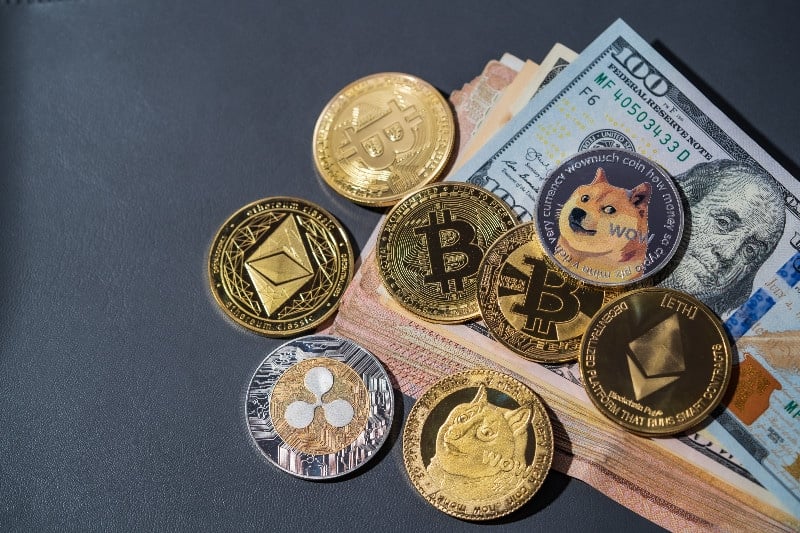The emergence of blockchain technology has proved to be a major disruptive force, with cryptocurrency industry, in particular, coming to be considered among the most high-profile use cases in the modern financial landscape.
Summary
Cryptocurrency industry in the fintech sector
Like most technology-oriented industries, financial technology or Fintech is subject to constant evolution. New finance-related applications and services are emerging rapidly in recent years, revolutionizing the management and processing of payments worldwide. According to a report by Capgemini, nearly 25% of customers in the US have shown interest in trying out Fintech-based financial products.
The cryptocurrency industry has unearthed propitious growth opportunities for fintech startups across the globe, inspiring competition across the financial world, from wallets for digital asset storage to novel channels allowing enterprises and customers to attain “real world” value from their digital coins. These advantages have also spurred a wave of enterprise adoption, signaling a “coming-of-age” of the industry with the constant emergence of new crypto unicorns. Since the start of 2021, over 50 blockchain and cryptocurrency-related projects have achieved the coveted unicorn status.
The growing significance of digital coin as a sought-after payment option has proved to be beneficial for the global cryptocurrency market, which is expected to exceed a valuation of $1.8 billion by 2027, as per a Global Market Insights, Inc. report.
Emergence of compatible peer-to-peer payment platforms
Peer-to-peer (P2P) payments have been a focus of interest for years; however, in 2020, this interest quickly turned into a necessity, as the COVID-19 pandemic wreaked havoc across the banking industry, leading to closures and disruptions across branches and postal services worldwide. In order to comply with social distancing protocols, put into effect by governments across the globe, consumers began to shift away from traditional banking methods, turning to digital solutions for conducting transactions. This trend thrust P2P, which has been on the rise since the advent of smartphones in the late 2000s, into the limelight, with National Association of Federally-Insured Credit Unions (NAFCU) estimates suggesting that almost 70% of adults have used at least one peer-to-peer service as of 2020 year-end.
The immediacy and control offered by peer-to-peer payment solutions, alongside their ability to replicate the low-friction experience of digital wallets have contributed greatly to cryptocurrency industry growth from this application segment over the years. As consumers continue to seek more scalability and additional performance in their financial operations, major entities have started to introduce P2P payment and trading platforms with support for crypto money. PayPal-owned Venmo, for instance, introduced cryptocurrency-compliance on its peer-to-peer payment app in April 2021, making it easier for users to hold, buy and sell digital coin, including Ethereum, Bitcoin, and Litecoin, among others for as little as $1.

XRP gains favor due to superior transaction processing performance
While Bitcoin has established itself as the most prominent type in the cryptocurrency industry since its inception, in recent years it has been facing stiff competition from newer contenders like Ripple, Ether, and Cardano.
Ripple, in particular, has gained rapid momentum in the digital finance world, with XRP, its digital coin, being hailed as a revolutionary force for the global remittance service industry. Powered by XRP-ledger, the cryptography-based virtual currency has been developed specifically as a payment application and is used extensively for asset exchange, payment settlement, and remittance systems similar to SWIFT. Unlike Bitcoin, XRP is generally pre-mined and as such involves a less complicated mining method, resulting in a significant reduction of settlement times from days to seconds, as well as greater savings.
This became increasingly evident during the COVID-19 crisis, when the use of services like Mobile Money, Ripple, and bKash helped ensure greater operational efficiencies, faster settlements, and more favorable rates for foreign exchanges, according to the Asian Development Bank.
In 2020, Ripple announced its intention to introduce an On-Demand Liquidity (ODL) solution to the Indian market, in order to improve the speed, ease, and cost-effectiveness of remittances via the use of digital assets. By launching “The Path Forward for Digital Assets Adoption in India”, a policy paper, the company highlighted the various opportunities policymakers could leverage to create an optimal regulatory framework for the Indian digital asset and cryptocurrency ecosystem.
With the scope of cryptography-based virtual currency growing day by day, accessibility and acceptability are becoming key areas of focus for the cryptocurrency industry. Persistent advancements and evolutions in the cryptographic technique are addressing this, encouraging more sectors and enterprises to accept digital coin and effectively positioning cryptocurrency as the new standard financial system of the future.
Author’s Bio: Saloni Walimbe
An avid reader since childhood, Saloni is currently following her passion for content creation by penning down insightful articles relating to global industry trends, business, and trade & finance. With an MBA-Marketing qualification under her belt, she has spent two years as a content writer in the advertising field. Aside from her professional work, she is an ardent animal lover and enjoys movies, music and books in her spare time.



